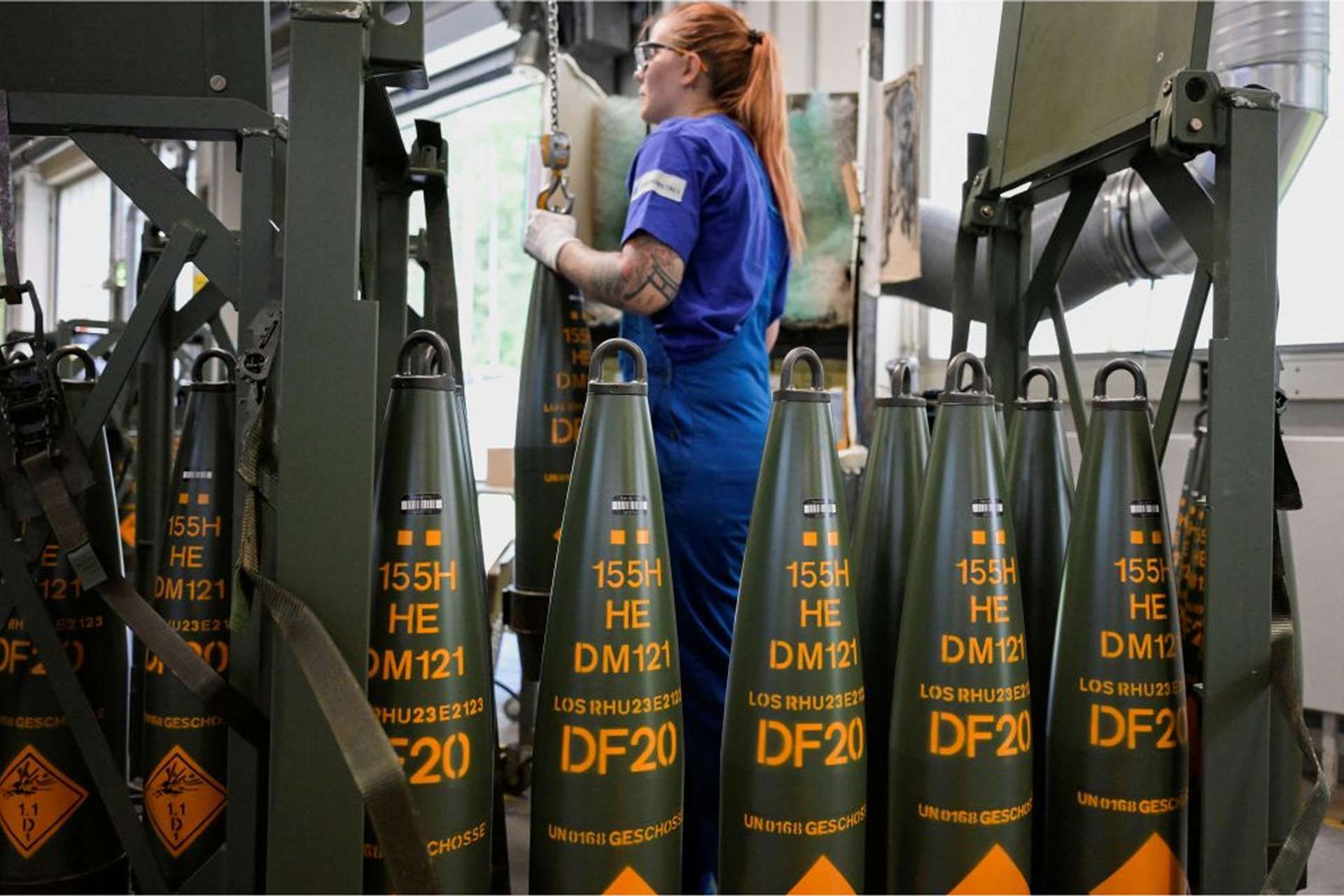Breaking news
Russia Produces Artillery Shells Three Times Faster than Ukraine’s Allies.
A major challenge for Ukraine’s armed forces is Russia’s ability to produce artillery shells about three times faster and at a quarter of the cost compared to Ukraine's Western allies, according to an analysis by Sky News and CNN. This information is crucial in the context of the conflict in Ukraine as it provides an advantage to Russian forces.
Follow Army Recognition on Google News at this link

155mm artillery ammunition production plant. (Picture source: Rheinmetall)
Management consulting firm Bain & Company highlighted this issue, noting that Ukraine heavily relies on ammunition supplies from the United States and Europe to combat Russia's large-scale invasion. This war has been described as a “battle of fires” due to the massive volume of artillery used. Ukrainian soldiers on the front lines report that for every shell they fire at Russian positions, the invading troops can launch about five shells back.
Senior Lieutenant Kostiantin, commander of an artillery battery in the 57th Brigade, explained that they can often destroy a target with just one, two, or three shells. However, he also emphasized the importance of continuing to repel the Russians and making every meter of land they tried to take cost them hundreds of lives.
Research by Bain & Company, based on public information, indicates that Russian factories are expected to manufacture or refurbish about 4.5 million artillery shells this year. In contrast, the combined production of European nations and the United States is estimated at 1.3 million shells.
The analysis also revealed that the average production cost per 155 mm shell, the type produced by NATO countries, is about $4,000 (£3,160) per unit, although this cost varies significantly between countries. In comparison, the production cost of a 152 mm shell used by the Russian armed forces is about $1,000.
Despite sanctions, Russia has intensified its production by working continuously and expanding its defense workforce to 3.5 million people. Russia uses about 10,000 shells per day compared to 2,000 for Ukraine, increasing the pressure on Ukrainian forces. Russia also imports ammunition from Iran and North Korea to supplement its domestic production and possibly from China, according to recent UK declarations.
The artillery production gap could influence the course of the conflict. European nations are striving to increase their ammunition production, with plans for new factories in Germany and Ukraine. However, the US goals of producing 100,000 shells monthly by the end of 2025 seem unrealistic without continuous funding from the US Congress, currently stalled.
Western military officials insist that capitalist nations will eventually outproduce Russia’s managed economic model. However, some caution that Moscow currently holds the upper hand, which could pressure Ukraine’s negotiating position if Western aid weakens.
Russia’s artillery production capacity, combined with the importation of ammunition from Iran and North Korea, gives it a significant strategic advantage. The outcomes of the conflict could largely depend on the quantity of available shells, highlighting the crucial importance of artillery production in this prolonged war.

US Army 155mm Artillery Ammunition. ( Picture Source: US DoD)


























